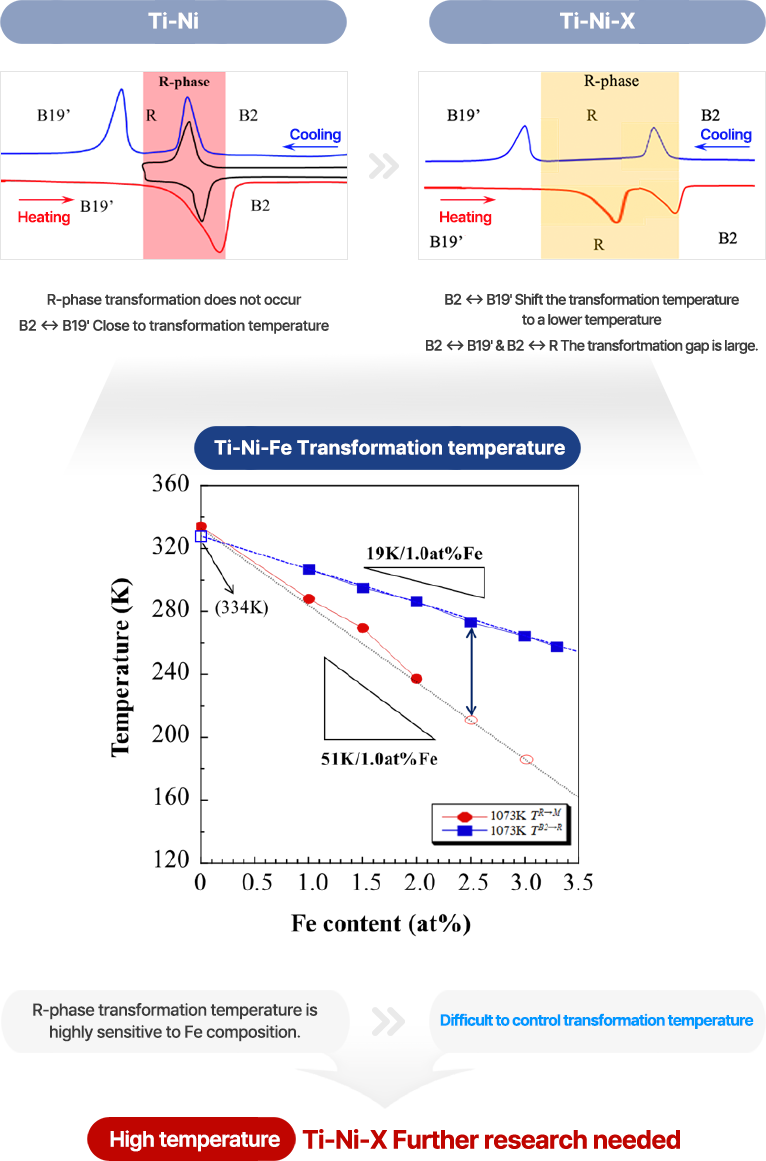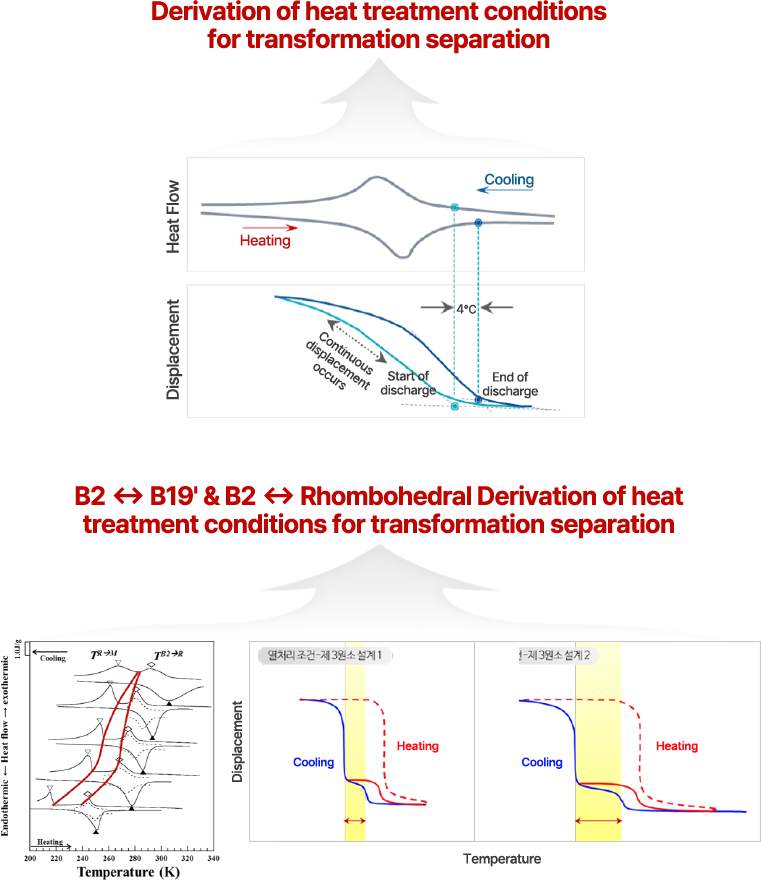research and developmen
For high pressure·Non-hydrostatic pressure·High temperature B2 ↔ Rhombohedral
Development of Rhombohedral Transformation Control Technology


Performance 1
Deformation starts at 0 degrees and outlet opens (Completed technology)
Reaction temperature control technology for alloys – development of optimal alloy composition and heat treatment conditions
Alloy composition design (addition of third element), establishment of heat treatment conditions


Performance 2
When the temperature rises, the outlet closes at 4 degrees (Completed technology)
Transformation hysteresis minimization technology
❶ Minimize transformation history (0 ℃ OPEN 4 ℃ CLOSE)
❷ B2 ↔ B19’ & B2 ↔ Rhombohedral transformation separation


Performance 3
Controls water discharge by continuously generating displacement
R-phase transformation interval expansion ▶ Continuous displacement generation ▶ Continuous increase in water discharge For high pressure use
For Non-hydraulic For Pressure use
Spring design, temperature gradient heat treatment, and transformation interval control according to valve usage conditions.


Performance 4
Durable for repeated use
Improved durability so that there is no change in valve opening/closing temperature even after repeated use
For High pressure For Non-hydrostatic For High temperature
❶ Ti3Ni4 precipitate control - optimal aging temperature and time
❷ Potential control - development of processing conditions and thermomechanical processing


Performance 5
Accurate spring displacement control
Accurate displacement occurs at appropriate temperature under high pressure (4~6bar) and bias spring conditions
>For High pressure For Non-hydrostatic For High temperature
Derivation of spring displacement values through linear-nonlinear structural analysis


Performance 6
Control of total fine flow discharged per hour
Emission prediction technology through multi-phase flow analysis
For High pressure For Non-hydrostatic
Linked analysis using Fluid-Structure Interaction & Multiphase Flow Methods





